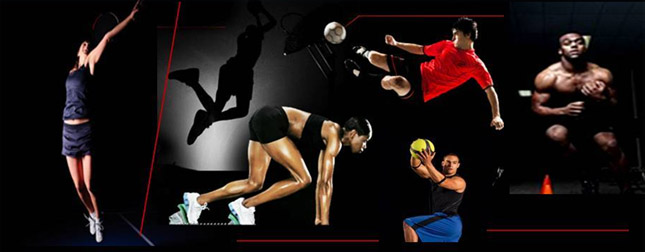Performance Enhancement: Sport Specific Training
Posted on October 20th, 2016 by Andries
By Andries Lodder

In today’s environment of competitive sports we are continually seeking ways to improve our performance. Additionally, more and more people are asking about performance enhancement training and what can be done to increase performance.
Proper training is necessary to achieve athletic success, and for success, we have to look at the combination of near perfect posture, optimal balance and proprioception, ultimate core and overall stability, perfect technique, strength, speed and power. These will not only improve your performance but keep you injury free.
Over the next couple of months I will discuss the importance of Sport Specific Training, why Core Stability is so important for your performance, how Eccentric Training can benefit your overall strength and stability, and lastly what Plyometric Training is and the importance of it for ultimate performance.
With the ever increasing level of competition, athletes have come to realize the importance of year round training programs that incorporate all areas of training specific to their sport, the specific times to peak as well as how to prevent overtraining.
Sport Specific Training Programs help dedicated sports people improve their sporting ability through individualized training programs that integrate the sport and body for ultimate performance.
To understand the importance of sport specific training, you have to understand what is needed to create a Sport specific Program or know what exactly is meant by the words sport specificity?
The ability to teach basic techniques of a sport depends largely on the knowledge of the effects you are trying to produce and of the forces that cause these effects. Biomechanics is the answer for the scientific basis for the analysis of the techniques used in sports and emphasizes how it can be used to your advantage in the analysis of sporting techniques.
Biomechanics is the science concerned with the internal and external forces acting on a human body and the effects produced by these forces. In other words, the internal and external forces acting on a human body determine how the body moves during the performance of a motor skill, therefore referred to as the athletes technique.
Before we continue, lets take a few steps back. When you first started taking part in sport, you had to learn how to catch or throw or jump. This is called motor learning. Therefore the knowledge of motor learning equips us to make sound judgments concerning methods of instruction, length, frequency, nature of practice, and so on.
Also, when you started running, cycling or swimming, you all agree that you needed to be fit. To get fit you need to improve the cardiovascular system of your body. Therefore the knowledge of physiology equips us to make sound judgments concerning the amount and type of training to prescribe in a given case.
Now, when it comes to training our muscular system for performance, we grab the first magazine with a gym program in and copy that and use it as your strength training program. For the average Joe out there it seems like a good idea, but to me it seems like you just bought the fastest sports car out on the market, and not using it to its full potential.
Therefore the knowledge of biomechanics equips us to choose appropriate techniques and to detect the root of faults that may arise during training.
Therefore, motor learning is the science of skill, physiology the science of training, and biomechanics the science underlying techniques.
Now that we know what Biomechanics is, how do we use it to be more sport specific?
The best and quickest way to improve at your chosen sport is to analyze specific sporting techniques by breaking down the technique into different phases and identify the key areas that need to be strengthened. For example, if you are a runner, the most important areas are your ankles, knees, hips and back. These areas take the most strain and therefore their stability is of most importance. For stability in these areas, you need to focus on specific muscles, such as calves and shins (ankles), quadriceps and hamstring (knees), glutes (hips) and core stability (back).
Integration between the specific sport and your body is the most important factor. Factors such as what type of sport, position played in sport or role in the team, will determine what areas need to be improved and focused on. For example, if you are a sprinter in cycling, you need explosive power for that last burst of energy during the sprint at the end of a race. Therefore your muscles need to be trained to contract explosively.
Finally, equilibrium is achieved through integration of optimal functional strength, power, core stability, balance, proprioception, reaction time, agility, decision making and technique. Only when the body is at total equilibrium, an athlete can perform optimally.
Next month we will look in more depth at core stability for enhanced performance
Tweet